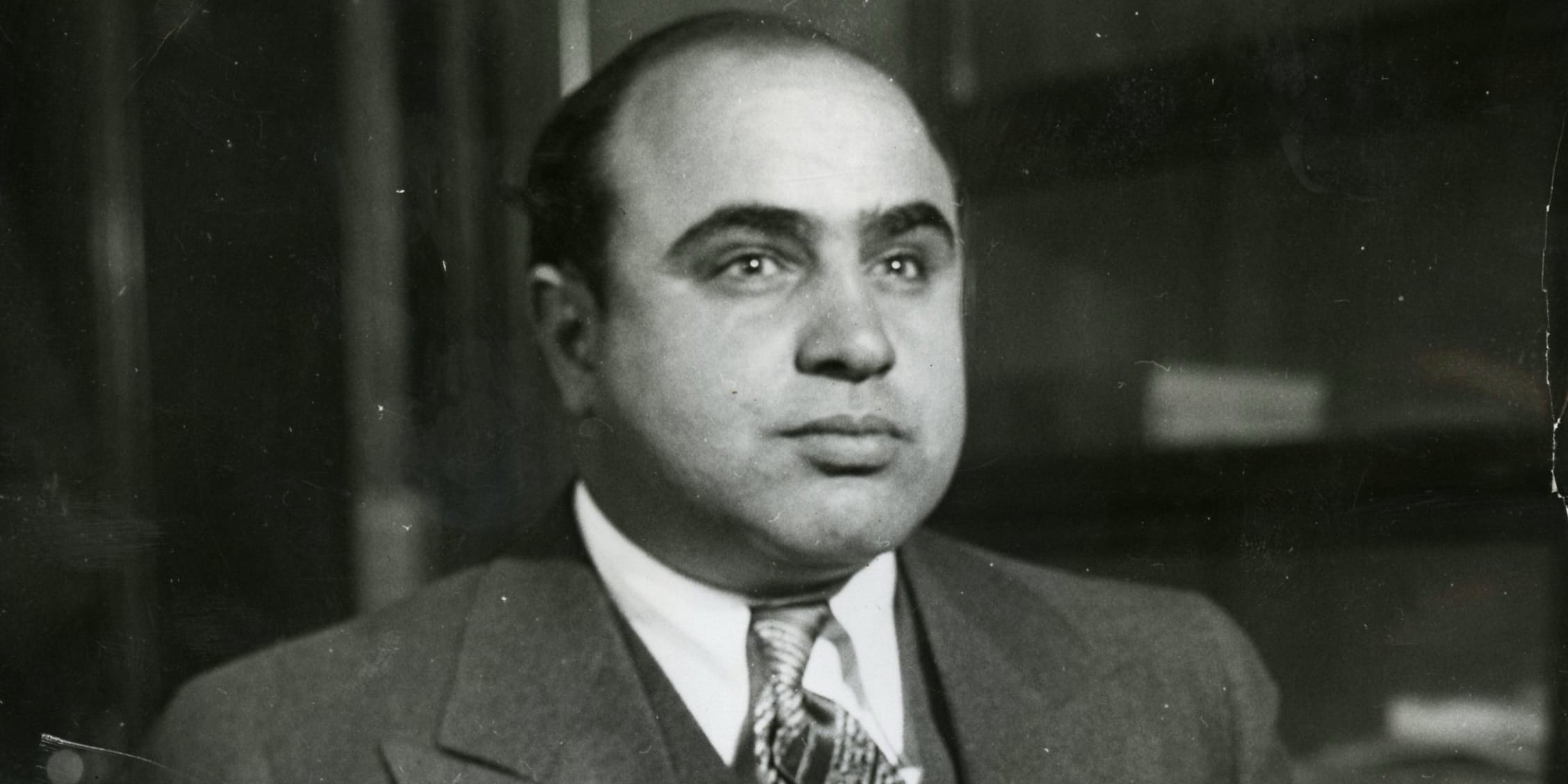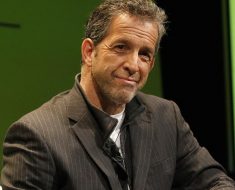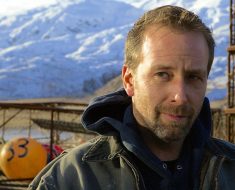
Al Capone net worth is $100 Million. Also know about Al Capone bio, salary, height, age weight, relationship and more …
Al Capone Wiki Biography
Alphonse Gabriel Capone was born in 1899, in New York. He died in 1947. He was one of nine children to Italian immigrants. He is mostly known as an American gangster Al Capone who became rich and famous during the Prohibition era, when he and his two brothers were running the criminal empire known as the Chicago Outfit, which has definitely had the biggest impact on his total net worth.
So, just how rich was Al Capone? Well, the net worth of this crime boss was projected to be over $100 million by sources, the larger part of his wealth having come from the period during the prohibition. It was estimated that by 1929, Capone’s profits from the diverse sources of his business included: over $60 million from selling illegal alcohol, about $25 million from the gambling business, over $15 million from racketeering. It was believed that Capone had over 600 gangsters to keep his business from other gangs. He lived in a mansion on South Beach’s Palm Island. The 6,100-square-foot mansion’s grandiose size and cost only affected his tax problems. However, he kept the mansion, and retired there after his discharge. It is estimated that his empire would worth around $1.3 billion nowadays.
The Capones immigrated to the United States, first by travelling from Italy to Austria-Hungary in 1893, where they took a ship and sailed to the U.S. They at last settled in the Navy Yard sector of Brooklyn, where Al spent his childhood. When he was 11, the Capone family moved to another part of Brooklyn. He attended a catholic school, but he was expelled because he hit a teacher when he was 14 years old. He first became a bouncer in organized crime grounds such as brothels. When Capone was young, he went to Chicago and became a bodyguard and jack of all trades for Johnny Torrio, who was leading, at the time, a criminal organization which illegitimately sold alcohol. This organization was the predecessor of the Outfit, which they founded together. His organization was politically secluded by the Unione Siciliana. A clash with the North Side Gang was influential in Al Capone’s ascend and descend. Namely, Torrio retired after North Side hitman nearly killed him, giving control to Capone who was the co-founder and then became the boss of the Chicago Outfit. He proceeded to have a seven year reign as the crime boss during the Prohibition era. He expanded the illegal business through even more brutal means, because his reciprocally beneficial agreement with mayor William Hale Thompson and the city’s law enforcement made him untouchable. His seven-year period of influence as a crime boss was finished when 33-year-old Capone was sentenced to spend 11 years in a federal prison, part of which he spent in the famous Alcatraz. He tried to bribe the judges and appeal, but ultimately he failed. He was already presenting signs of syphilitic dementia during his life in prison, but even more when he was released eight years later. He died of a cardiac arrest after he had a stroke. Al Capone was presented in numerous books and films ever since.
Concerning his personal life, he married Mae Josephine Coughlin in 1918, when he was just 19 years old, so his parents had to consent to the marriage in writing. She was Irish Catholic. Earlier that month, she had given birth to their son Albert.
IMDB Wikipedia $100 million 1899-01-17 1947 1947-01-25 Actor Al Capone Al Capone Net Worth Alabama Albert Francis “Sonny” Capone Alcatraz Express American Mafia Banana Republic Birmingham Brooklyn Camera angle Camera Department Capone Catsuit CBS Chicago Chicago Outfit Clothing Crop top Frank Nitti: The Enforcer and Road to Perdition Gangster Hal Capone January 25 Johnny Torrio Loyalty & Betrayal: The Story of the American Mob (1994) Mae Capone Mae Josephine Coughlin Miscellaneous Crew New York New York City Palm Island Prohibition in the United States Rum-running Scarface Sports Illustrated Swimsuit Issue The Scarface Mob The St. Valentine’s Day Massacre The Untouchables U.S. William Hale Thompson
Al Capone Quick Info
| Full Name | Al Capone |
| Net Worth | $100 Million |
| Date Of Birth | January 17, 1899, Brooklyn, New York City, New York, United States |
| Died | January 25, 1947, Palm Island |
| Height | 5′ 10½” (1.79 m) |
| Profession | Gangster, leader of the Chicago mafia during the Prohibition era |
| Nationality | American |
| Spouse | Mae Josephine Coughlin (m. 1918–1947) |
| Children | Albert Francis “Sonny” Capone |
| Parents | Teresina Capone, Gabriel Capone |
| Siblings | Frank Capone, Ralph Capone, James Vincenzo Capone, Umberto Capone, Rose Capone, Matthew Capone, John Capone, |
| IMDB | http://www.imdb.com/name/nm0135330 |
| Allmusic | http://www.allmusic.com/artist/al-capone-mn0002147570 |
| Music Groups | Gangs: Junior Forty Thieves, Bowery Boys, Brooklyn Rippers, Five Points Gang |
| Movies | Capone has been portrayed on screen by: Al Capone (1959), Al Capone (1966), The St. Valentine’s Day Massacre (1967), Capone (1975), The Untouchables (1987), The Revenge of Al Capone (1989), The Lost Capone (1990) |
| TV Shows | The Untouchables, The George Raft Story (1961) |
Al Capone Quotes
- A lawyer and his briefcase can steal more than ten men with guns.
- I don’t even know what street Canada is on.
- It’s bootleg when it’s on the trucks, but whenever your host hands it to you on a silver tray, it’s hospitality.
- They can’t collect legal taxes from illegal money.
- You can get further with a kind word and a gun, than you can with just a kind word.
- You can go a long way with a smile. You can go a lot farther with a smile and a gun.
Al Capone Important Facts
- His favored suite in Miami was used in the Only Fools and Horses…. (1981) episode Miami Twice where the episode was recorded. David Jason considered Capone a more violent Del Boy.
- Subject of the song “Al Capone” by Wesley Willis.
- The eldest of nine children.
- Grew up in Park Slope, Brooklyn.
- Often passed off the scar on his face as a wartime wound.
- His wife Mae Coughlin was Irish-American.
- Eight of his accomplices’ were charged (1943) with extortion of $2.5 million from the Cinema Technicians Union.
- One of Capone’s all-time favorite tunes was George Gershwin’s classic “Rhapsody in Blue”.
- Brought to Chicago by Johnny Torrio to help his aunt’s husband, crime boss Jim Colosimo, take out his opposition. It was rumored that Capone later assassinated Colosimo on Torrio’s orders.
- His lawyer, who testified against him in court, was named Edward O’Hare, or “Easy Eddie.” Chicago’s O’Hare International Airport is named for his son, Edward “Butch” O’Hare Jr. Butch O’Hare, of course, is the WWII Medal of Honor winner who saved his aircraft carrier by single-handedly shooting down seven to eight Japanese bombers.
- Spent eight months, from August 1929 to March 1930, in the Eastern State Penitentiary in Philadelphia for possession of a concealed weapon. He stopped in Philadelphia while returning to Chicago from an outing in Atlantic City, NJ, and was stopped by police, who frisked him and found the weapon on him.
- His estate tried to halt the production of the hit television series The Untouchables (1959). Their final tactic was to claim that the series was unfairly profiting from the Capone name. A story that made the rounds in Hollywood at the time was that some of Capone’s surviving colleagues, after exhausting all legal means to have the show pulled, put out a contract on “The Untouchables” producer Desi Arnaz. Arnaz found out about it and paid a substantial sum of money to have the contract lifted.
- More than a decade after his death, his infamy was re-established due to the Allied Artists biopic Al Capone (1959) with Rod Steiger in the title role. More importantly, however, later that same year he became a central figure in the hit television series The Untouchables (1959), where he was portrayed, on a recurring basis, by Neville Brand.
- He was the first to open free “soup kitchens” in Chicago at the beginning of the Great Depression. He also arranged to buy clothing for the needy.
- His son was nicknamed “Sonny.” Mario Puzo used this as the nickname for the son of Vito Corleone in his book “The Godfather.”
- During his confinement in the federal penitentiary at Atlanta, it was discovered that he was still able to run his empire from his cell, which had been converted into an apartment. He was then transferred to the new federal prison at Alcatraz Island in San Francisco Bay, where his means of communications were virtually cut off.
- He, and some of his future associates, were members of New York’s notorious Five Points Gang.
- He rose from the position of saloon bouncer to the leading crime boss of Chicago in a period of only six years.
- Well into the 1960s, The Guinness Book of World Records listed him holding the record for the highest personal income. He listed his trade as “second hand furniture dealer.”
- Older brother Vince Capone, a.k.a Richard ‘Two-Gun’ Hart, was a policeman in Nebraska. He was involved with stopping illegal bootlegging during Prohibition, while brother Al profited from it in Chicago.
- Was released in 1939 after serving five years at Alcatraz. He attempted to regain control of organized crime in Chicago, but could not. He then retired to Florida.
- Was incarcerated at Alcatraz Prison in San Francisco.
- Was sentenced to 11 years in prison for income tax evasion.
- The distinguishing scars on Capone’s face that gave him his famous nickname came from an incident in 1918 while he was working in a saloon. One night he approached a woman named Lena Galluchio and made a crude sexual advance. Her brother Frank, a well-known thief nicknamed “The Galluch”, insisted that Capone apologize. Capone refused and without a word Galluchio slashed his face twice with a razor. One story–given credibility by many who knew Capone, who was famous for never forgiving a slight–had it that after Capone recovered from the slashing, he tracked down Galluchio, found him sitting at a table in a saloon, walked up to him and without a word shot him in the head and killed him.
- One child: Albert Francis (4 December 1918 – 8 July 2004). Albert did not follow in his notorious father’s footsteps, instead, he supported his wife and their four daughters with a variety of jobs, and, aside from a shoplifting conviction in 1965, was a law-abiding citizen. In 1966, he changed his name to Albert Brown; “Brown” was one of his father’s many aliases. His godfather was Al’s mentor, real-life godfather Johnny Torrio.
Al Capone Filmography
| Title | Year | Status | Character | Role |
|---|---|---|---|---|
| The Corrupt and the Dead | 2016 | Documentary post-production | Himself | Archive Footage |
| Sinatra: All or Nothing at All | 2015 | TV Mini-Series documentary | Himself | Archive Footage |
| Ellis Island, une histoire du rêve américain | 2014 | Documentary | Himself | Archive Footage |
| Codes and Conspiracies | 2014 | TV Series documentary | Himself | Archive Footage |
| America’s Book of Secrets | 2013 | TV Series | Himself | Archive Footage |
| The Diary of a Slumlord | 2013 | Short | Himself | Archive Footage |
| Occupy Unmasked | 2012 | Documentary | Himself – Mob Leader | Archive Footage |
| Prohibition | 2011 | TV Mini-Series documentary | Himself | Archive Footage |
| Templeton Rye: Iowa’s Good Stuff | 2011 | TV Movie documentary | Himself | Archive Footage |
| Capone’s Whiskey: The Story of Templeton Rye | 2011 | Documentary | Archive Footage | |
| Mobsters | 2009 | TV Series | Himself | Archive Footage |
| Eliot Ness contre Al Capone | 2009 | TV Movie documentary | Himself | Archive Footage |
| Little Caesar: End of Rico, Beginning of the Antihero | 2005 | Video documentary short | Himself | Archive Footage |
| Bullets Over Hollywood | 2005 | TV Movie documentary | Himself | Archive Footage |
| The Top 5 Reasons You Can’t Blame… | 2005 | TV Series | Himself | Archive Footage |
| Biography | 1995-2005 | TV Series documentary | Himself | Archive Footage |
| Bîto Takeshi no akuyaku no susume!! | 2004 | Archive Footage | ||
| Rumrunners, Moonshiners, & Bootleggers | 2002 | TV Movie documentary | Himself | Archive Footage |
| The Legacy of Al Capone | 2001 | TV Movie documentary | Himself (uncredited) | Archive Footage |
| American Justice Set | 2000 | Video documentary | Himself | Archive Footage |
| The Saint Valentine’s Day Massacre | 2000 | TV Movie documentary | Himself | Archive Footage |
| The Big House | 1998 | TV Series documentary | Himself | Archive Footage |
| Escape from Alcatraz: The True Stories! | 1997 | Video documentary | Himself | Archive Footage |
| The St. Valentine’s Day Massacre | 1997 | TV Movie documentary | Himself | Archive Footage |
| Prohibition: Thirteen Years That Changed America | 1997 | TV Movie documentary | Himself (uncredited) | Archive Footage |
| The Century of Warfare | 1994 | TV Mini-Series documentary | Himself | Archive Footage |
| Loyalty & Betrayal: The Story of the American Mob | 1994 | TV Movie documentary | Himself | Archive Footage |
| Unsolved Mysteries | 1994 | TV Series documentary | Himself | Archive Footage |
| The Underworld | 1994 | TV Series documentary | Himself | Archive Footage |
| American Justice: Target – Mafia | 1993 | TV Mini-Series documentary | Himself | Archive Footage |
| Murderers, Mobsters & Madmen Vol. 4: Gangsters | 1992 | Video documentary | Himself | Archive Footage |
| The Magic of David Copperfield IX: The Escape from Alcatraz | 1987 | TV Special | Himself (uncredited) | Archive Footage |
| The Mystery of Al Capone’s Vaults | 1986 | TV Special documentary | Himself | Archive Footage |
| Zelig | 1983 | Himself (uncredited) | Archive Footage | |
| Moi, Tintin | 1976 | Documentary | Himself (uncredited) | Archive Footage |
| I due Kennedy | 1970 | Documentary | Himself | Archive Footage |
| The DuPont Show of the Week | 1962 | TV Series | Himself | Archive Footage |
| The Rise and Fall of Legs Diamond | 1960 | Himself (uncredited) | Archive Footage | |
| Project XX | 1956 | TV Series documentary | Himself – Crime Boss | Archive Footage |
| Chicago Syndicate | 1955 | Al Capone (uncredited) | Archive Footage | |
| The Golden Twenties | 1950 | Documentary | Himself | Archive Footage |
| Call Northside 777 | 1948 | Capone (uncredited) | Archive Footage |





